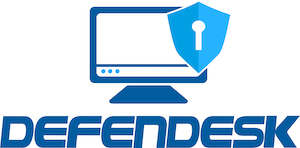Co-Managed vs Outsourced IT

These days, organizations have more technology than ever before, and this technology needs to be managed and maintained so as to retain the status-quo of operations. For some businesses, this is a piece of cake. They have their internal IT department handle it. Others, however, take to outsourced IT management, which keeps them focused on their own work rather than their technology. An increasingly common method of IT management combines the two to create an unlikely success story: co-managed IT.
The reasoning for improved IT service models is simple; many organizations are finding that their IT budgets aren’t accommodating their needs. 60 percent of IT executives find that their budgets can’t meet the specific needs of their organizations. To put it in perspective, that figure is an increase from last year’s 56%, meaning that as time goes on, and systems grow more complex, the need arises for changes to be made to an organization’s IT management infrastructure. The good news, however, is that managed and co-managed IT are able to decrease spending per user, and is capable of allowing IT to implement new services and initiatives throughout many different industries. Essentially, organizations achieve more, for less.
We’ll go in-depth into how the various models of IT management and maintenance, including in-house, managed/outsourced, and co-managed IT, can help your enterprise, using the analogy of owning a fleet of vehicles (like how a taxi company might function), which could either be serviced by in-house mechanics, outsourced mechanics, or a mix of the two. Any statistics provided are from a report, titled “IT Outsourcing Statistics 2016/2017,” by ComputerEconomics.
In-House IT
Having an in-house IT department is a lot like having licensed mechanics that work in your garage, repairing and managing your fleet’s vehicles as problems occur. The mechanics perform routine maintenance to resolve unsafe or dangerous conditions within the vehicles, and troubleshoot problems that you might have with them. It’s convenient because they’re right there, ready to give you a hand whenever you need it. However, you have to pay these mechanics for all of the hard work that they put in, and there’s always the possibility that they won’t be available to immediately assist you due to more pressing or urgent repairs.
Traditionally, large organizations that have the budget and infrastructure required have opted to invest in a well-trained, well-certified in-house IT department. This typically means that an organization has to invest heavily into acquiring the proper resources to delegate maintenance to, which can strain the budget. However, even an internal IT department with technicians who were hired to maintain and manage your technology can be stretched too thin. They might have other responsibilities that get in the way of performing day-to-day maintenance, or implementing innovative new solutions. It’s in these situations where the next types of IT service become immeasurably valuable.
Managed (Outsourced) IT Services
Using the aforementioned car analogy, let’s continue with managed IT services. Imagine that you have a skilled, third-party mechanic that you pay on a per-month basis, who will perform the needed maintenance for your fleet of vehicles as problems occur. You’re able to get the attention that your vehicles need to stay on the road for as long as possible. The idea is that through regular maintenance, you can mitigate problems with your vehicles and keep them in proper working order, preventing major repairs and ensuring longevity.
The primary benefit that comes from implementing managed IT services comes from the ability to focus on your business’s operations, rather than its technology solutions. You don’t need us to tell you that technology management is important and that it requires a particularly refined eye for detail and technical training. This is why so many organizations opt into outsourced IT management in at least some capacity.
Some of the most valuable services that can be outsourced to produce a decrease in costs include help desk support, desktop support, network operations, and data center operations. If improving service is a concern of yours, you can outsource services like IT security, disaster recovery, and web operations. The services that provide the best value, however, are desktop support, disaster recovery, and database administration. In other words, managed IT is an all-encompassing service that has the opportunity to increase value and decrease costs.
Co-Managed IT Model
Co-managed IT is what you get when you combine the knowledge and expertise of your in-house technicians, with those from an outsourced company. While this might seem counterproductive at first, let’s take another look at our vehicle analogy. If you have trained mechanics in-house, as well as outsourced mechanics, you can use a combination of the two to improve your operations. For example, the in-house mechanics could invest their time into modifying vehicles for more fuel-efficiency, while the outsourced team could perform routine maintenance like oil changes and tire rotations. In much the same way, co-managed IT allows your enterprise to implement new and innovative solutions, while keeping your organization’s infrastructure up-to-date and maintained by professional technicians.
Basically, co-managed IT is a way for enterprises to augment or make up for shortcomings in their own internal IT department, without onboarding new hires and going through the expensive and drawn-out hiring process. Co-managed/outsourced IT accounts for about 10.6%, on average, of an enterprise’s IT budget, and many businesses use the flexibility that co-managed IT offers to implement new solutions, expand current operations, and focus on the management of the business itself.
Many of the popular outsourced IT services, like network security, help desk support, desktop support, and more, are all great to implement in a co-managed IT approach. This helps your internal team focus on whatever it is that they need to be doing, be it managing internal operations or implementing new and exciting solutions that save your organization time and money. Some of the fastest growing IT services are perfect to outsource via a co-managed approach. In particular, 59% of IT executives plan to outsource their IT security. Disaster recovery and help desk support are two other popularly outsourced services.
